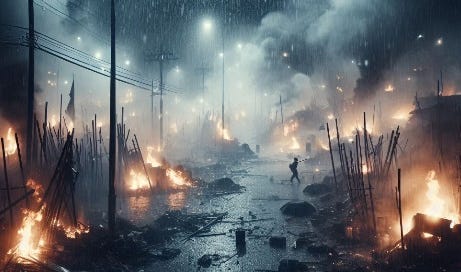"Those who make peaceful revolution impossible will make violent revolution inevitable." — John F. Kennedy
BLUF: Multiple indicators suggest we are at a significant turning point, marked by potential civil unrest and societal upheaval. These signs include cyclical societal shifts, economic pressures, and global preparations for civil discord. Media and government actions further highlight a readiness for potential conflict, suggesting that without peaceful solutions, violent outcomes may become inevitable.
Keep reading with a 7-day free trial
Subscribe to The Straight Juice Substack to keep reading this post and get 7 days of free access to the full post archives.




